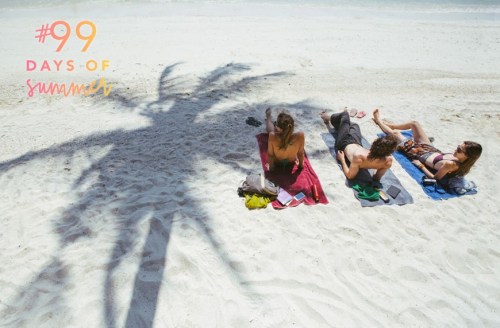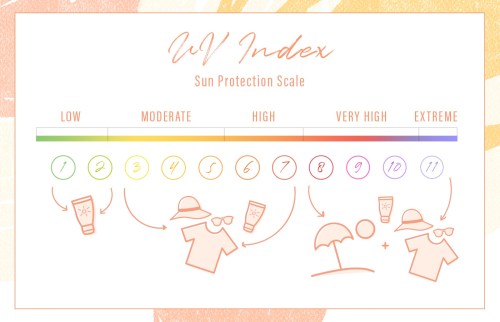These are the times you’re most likely to get sunburned, according to a derm
Here's exactly how the UV index is measured and the global destinations where you're most exposed. Plus, a derm's take on what all of that means.

Hazy days spent poolside are kind of like summer flings: You want to keep the relationship ephemeral and fun without suffering long-term consequences like skin-damage and chlorine-stripped locks. The first thing you need to know before committing to a day outside: How strong is the sun outside, really? While the weather app may show the day’s high and low temps front and center, scroll allll the way to the bottom, and you’ll find one indicator that you *really* need to pay attention to: the UV index.
“The UV index is a measure of the strength of [ultraviolet] rays reaching the surface of the earth at a particular time and location,” explains Joshua Zeichner, MD, a New York City-based dermatologist. “The higher the UV index, the more powerful the UV rays are and the more likely our skin is to get sunburned.” Here’s how to know *exactly* what the index means for you fun in the sun.
Below, learn all about UV rays—before grabbing your beach bag.

How is the UV index measured?
According to the standards set forth by the World Health Organization (WHO), UV rays are rated as follows: low (1-2), moderate (3-5), high (6-7), very high (8-10), and extreme (11 or more). Depending on the level of a given day, the WHO recommends precautions like wearing sunscreen (duh), choosing an OOTD that covers you from head to toe, or just avoiding the sun (period) at certain periods throughout the day. To get all the deets, check out the infographic above, but take note that—no matter the weather—the WHO recommends slathering on at least SPF 30, and keeping an eye out for any reflective surfaces (like water) that increase your exposure to UV rays.
This Parisian Skincare Brand Is Launching in the United States for the First Time—Here’s What a Derm Wants You to Know

We’re Calling It: Cleansing Balms Are the Face Wash of the Future—Here Are 3 to Add to Your Cart

This Is the One Product That Scarlett Johansson Always Keeps in Her Purse and on Her Bedside Table

What areas of the globe leave you the most exposed?
“Generally speaking, the UV index is highest closest to the equator and decreases as you near the north or south pole,” says Dr. Zeichner. Obviously, as seasons change, the levels wax and wane, but countries close to the equator to have extreme ratings on the ultraviolet scale roughly 365; while destinations closer to the poles have peaks and valleys. Thus, next time you’re booking an airline ticket, consider checking out where the locale stacks up sun-wise. Your eyeballs and skin will thank you.
If you’re already out frolicking outdoors, Dr. Zeichner says you can judge the potency of the rays just by taking a look at your shadow. “The shorter your shadow, the higher the UV index,” he says. “During peak hours of the day, between 10 AM and 4 PM, the earth is closest to the sun and UV rays are strongest.” So if you’re shadow is looking a wee bit short, now is the time to reapply your SPF and pull out your baseball cap. “You should always wear your sunscreen when you are outdoors, but you should be particularly vigilant if you are out in an environment with a high UV index,” he adds, noting that you should reapply that sunblock every two hours regardless of what the scale says or immediately after swimming or sweating. (Looking at you, beach runner.)
Speaking of swimming, these are the best places to practice your backstroke in every state. Plus, why you should swim in a saltwater pool *instead* of a chlorine one.
Sign Up for Our Daily Newsletter
Get all the latest in wellness, trends, food, fitness, beauty, and more delivered right to your inbox.
Got it, you've been added to our email list.







